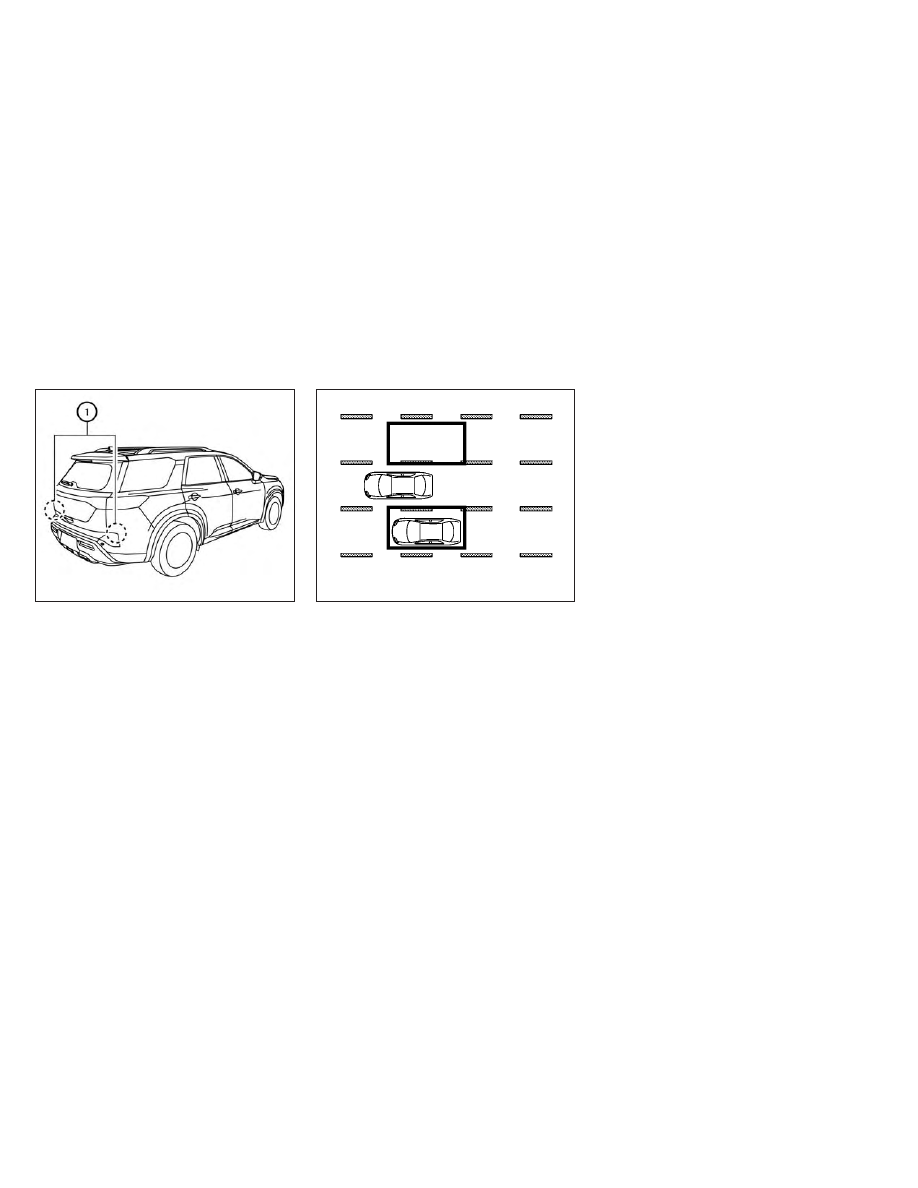Nissan Pathfinder (2022 year). Manual in english - page 23

The BSW system uses radar sensors
O
1
installed near the rear bumper to detect
other vehicles in an adjacent lane.
The radar sensors can detect vehicles on
either side of your vehicle within the detec-
tion zone shown as illustrated. This detec-
tion zone starts from the outside mirror of
your vehicle and extends approximately
10 ft (3.0 m) behind the rear bumper, and
approximately 10 ft (3.0 m) sideways.
LSD4157
SSD1030
Detection zone
5-50
Starting and driving